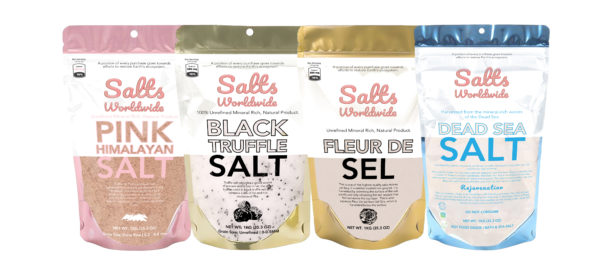Iodized salt is the norm, and sea salt is rarely seen on the menu. If it is used at all, it is as an additive to flavor the food. Sea salt is mined from the sea. The iodized salt you buy from the grocery store or in restaurants comes from iodine-laden rocks in that salt mines.

The market for sea salt has shrunk dramatically, however. Salt has always been a part of the food supply, but it was rarely found in so much in such little quantity. (In fact, sea salt was first used in Europe by the Romans and was used for making the brine, as well as for cooking fish.) The reason we see more sea salt now is that we’ve gotten wiser about the threats to our health from salt.
The first threats to health from salt are those related to its mineral content. Some of the minerals in sea salt, for example, are sodium and potassium. These are both vital minerals and need to be in balanced amounts in our diet.
There are also a few minerals that sea salt doesn’t contain. One is calcium. Sea salt doesn’t have any potassium. Most people don’t like the taste of sea salt, even though it is used to cook food.
Salt and its health effects are especially worth examining if you are trying to lose weight. Research shows that people who eat more salt are more likely to be overweight.
Calcium is a mineral found in salty foods. Eating too much salt might mean that you aren’t getting the amount of calcium you need to maintain healthy bones.
Sea salt might not be a very good substitute for iodized salt in this case. Salty foods that come in the form of ketchup or salad dressing are good sources of iodine. In other words, salt is better than iodine for this use. In other words, the iodine in sea salt is better than the iodine in iodine-based salt.
So, the iodine in sea salt is better than the iodine in iodine-based salt, but not as good as the iodine in sea salt. There are, however, commercial brands of salt that do contain a lot of iodine, so you might want to get some iodized salt.
A second reason you might want to choose sea salt is that salt contains more of the B-vitamins than table salt. The B-vitamins play a role in several important functions in our bodies. Sea salt contains the B-vitamins as well as other minerals that we don’t normally find in salt.
The third reason you might want to use sea salt is that the crystals of sea salt can be thicker than table salt. This is because of the inclusion of iodine. When we consume salt, the iodine that is left in the salt can clump together and be available to bind with other substances. This allows salt to be thicker than the salt we normally eat.
A fourth reason we use iodine in salt is that iodine is a vital trace element to our bodies. Our thyroid glands are unable to produce enough iodine if we are under long-term stress, such as being involved in a car accident or trapped in an earthquake. Many of our functions would be crippled if we didn’t get enough iodine in our diets.


